Think that you may own a portrait of composer Ludwig Van Beethoven? We authenticate, appraise, research and issue certificates of authenticity (COA) and provide consultations for all portraits of Ludwig Van Beethoven.
Ludwig van Beethoven was a German composer. He is generally regarded as one of the greatest composers in the history of music, and was the predominant figure in the transitional period between the Classical and Romantic eras in Western classical music. His reputation and genius have inspired — and in many cases intimidated — ensuing generations of composers, musicians, and audiences. While primarily known today as a composer, he was also a celebrated pianist and conductor, and an accomplished violinist.
Born in Bonn, Germany, he moved to Vienna, Austria, in his early twenties, and settled there, studying with Joseph Haydn and quickly gaining a reputation as a virtuoso pianist. In his late twenties he began to lose his hearing gradually, and yet he continued to produce notable masterpieces throughout his life, even when his deafness was almost total. Beethoven was one of the first composers who worked as a freelance — arranging subscription concerts, selling his compositions to publishers, and gaining financial support from a number of wealthy patrons — rather than being permanently employed by the church or by an aristocratic court.
There are several existing authentic portraits of Ludwig van Beethoven. Portrait #1, the first existing portrait of Beethoven, was painted around 1800 by Gandolph Ernst Stainhauser von Treuberg. This was one of the earliest portraits of Beethoven. It was created after Beethoven first became successful in Vienna. In 1801, Johann Joseph Neidl created a copper engraving that was based on this portrait. The portrait is now considered lost.
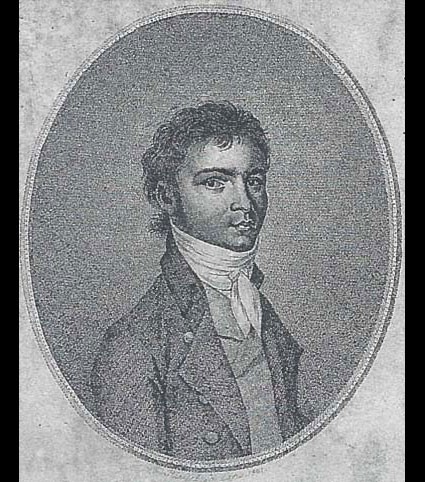
Portrait #1, Gandolph Ernst Stainhauser von Treuberg, around 1800
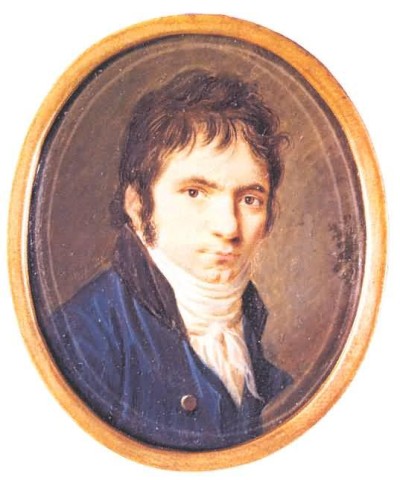
Portrait #2, Christian Horneman, 1803
Portrait #3 was painted by Joseph Willibrord Mähler in 1804. This was the first of numerous portraits of Beethoven completed by Mähler. It depicts Beethoven holding a lyre.
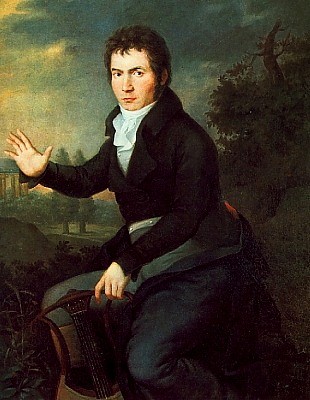
Portrait #3, Joseph Willibrord Mähler, 1804-1805
Portrait #4 was painted by Isidor Neugass in 1806. This portrait was created by order of Prince Carl von Lichnowsky.
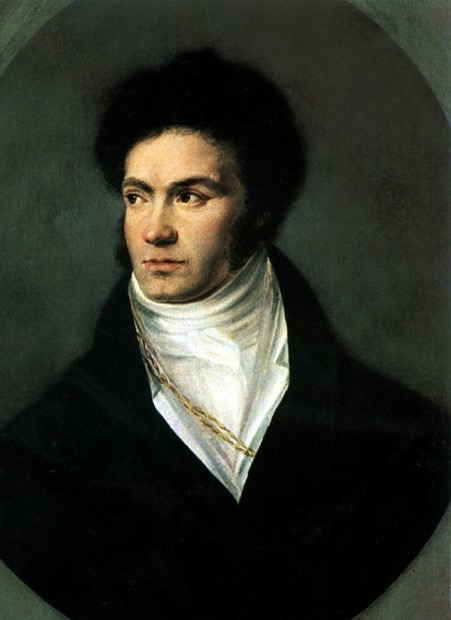
Portrait #4, Isidor Neugass, 1806
Portrait #5, was painted by French painter Letronne in 1814. The original purpose of the portrait was to act as the draft for a copper engraving to be done by Blasius Höfel. However, Höfel did not approve of the portrait and Letronne's portrait was revised by Höfel.
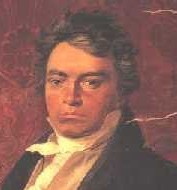
Portrait #5, Letronne, 1814
Joseph Willibrord Mähler painted Portrait #6 and Portrait #7 in 1815. Around this time Mähler painted a series of portraits depicting Viennese composers. A portrait of Beethoven was included in this series. Several versions of this portrait were completed and these two portraits are two of those. It is thought that Mähler was fond of the portrait as he kept a version of it until he died.

Portrait #6, Joseph Willibrord Mähler, 1815
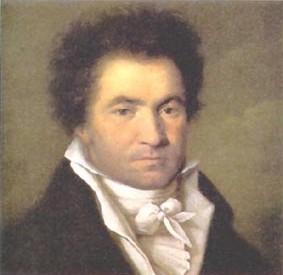
Portrait #7, Joseph Willibrord Mähler, 1815, Portrait 2
Johann Christoph Heckel painted Portrait #8 in 1815. This portrait is considered authentic and was painted during Beethoven's lifetime.

Portrait #8, Johann Christoph Heckel, 1815
Portrait #9 was painted by Ferdinand Schimon in 1818. Schimon painted many portraits of musicians, including that of Beethoven. Beethoven at first did not want to sit for Schimon. Instead, Schimon painted Beethoven in his apartment while he was composing. Beethoven later sat for the artist so that the portrait could be completed.
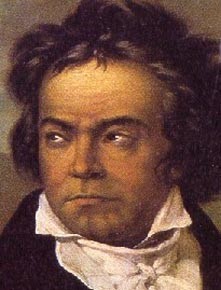
Portrait #9, Ferdinand Schimon, 1818
August von Kloeber created portrait #10 in 1818. Although Beethoven did not actually sit for this portrait, the composer thought that it was very lifelike and thought the artist did an excellent job of portraying his hairstyle.
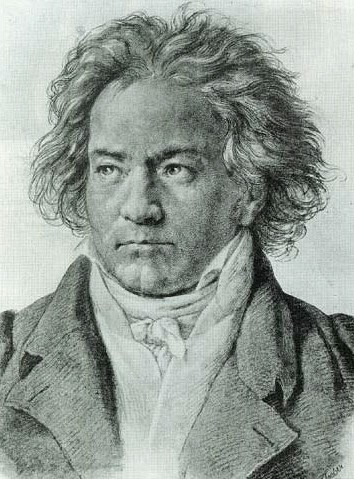
Portrait #10, August von Kloeber, 1818
Portrait #11, painted by artist Joseph Karl Stieler in 1820, is perhaps the most famous. Most notable about the painting is that it actually shows Beethoven composing. Franz and Antonie Brentano, friends of the composer, commissioned the painting. Beethoven sat for Stieler four times. This itself is notable as Beethoven had a difficult time sitting still.
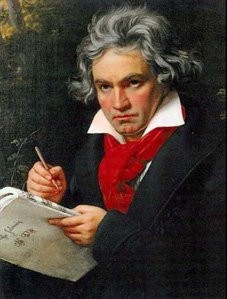
Portrait #11, Joseph Karl Stieler, 1820
Ferdinand Georg Waldmüller painted Portrait #12 in 1823. There are several notes and letters in Beethoven's conversation books that indicate he only sat once for Waldmüller. The sitting was interrupted and the artist was only able to paint the composer's face. Most likely, his clothing and hair were added after the sitting. There were originally two versions of this panting. The first was very casual while the second was more elaborate. The second one was kept in the Leipzig publishing house which burned in 1943. Therefore, the second painting was destroyed although reproductions exist. The first painting is still in existance. The portrait portrayed is that which was destroyed.
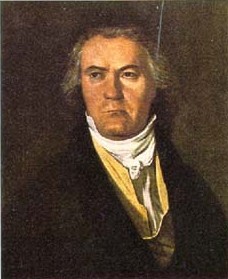
Portrait #12, Ferdinand Georg Waldmüller, 1823
Portrait #13 was painted by Johann Stephan Decker in 1823. This is the last known portrait of Beethoven.

Portrait #13, Johann Stephan Decker, 1823
In addition to the verified portraits of Beethoven, there are several anonymous portraits that depict a subject who greatly resembles Beethoven. It is likely that some of these are in fact additional portraits of Beethoven. However, they cannot be authenticated. It is also highly likely that additional portraits of Beethoven could be found. Still wondering about a portrait in your family collection? Contact us... it could be of Ludwig van Beethoven.
